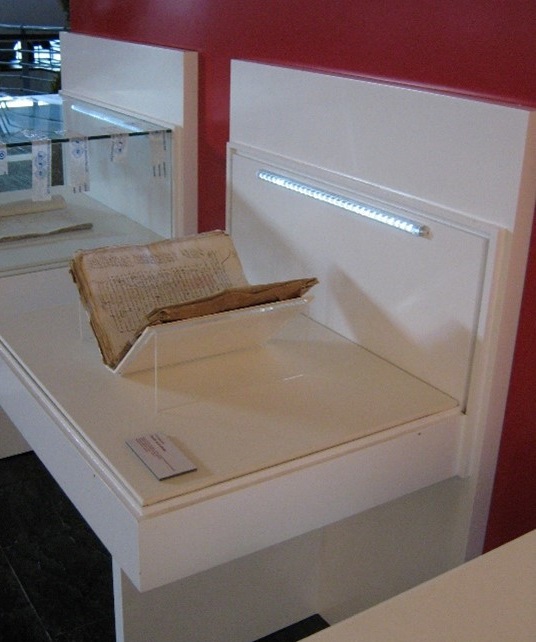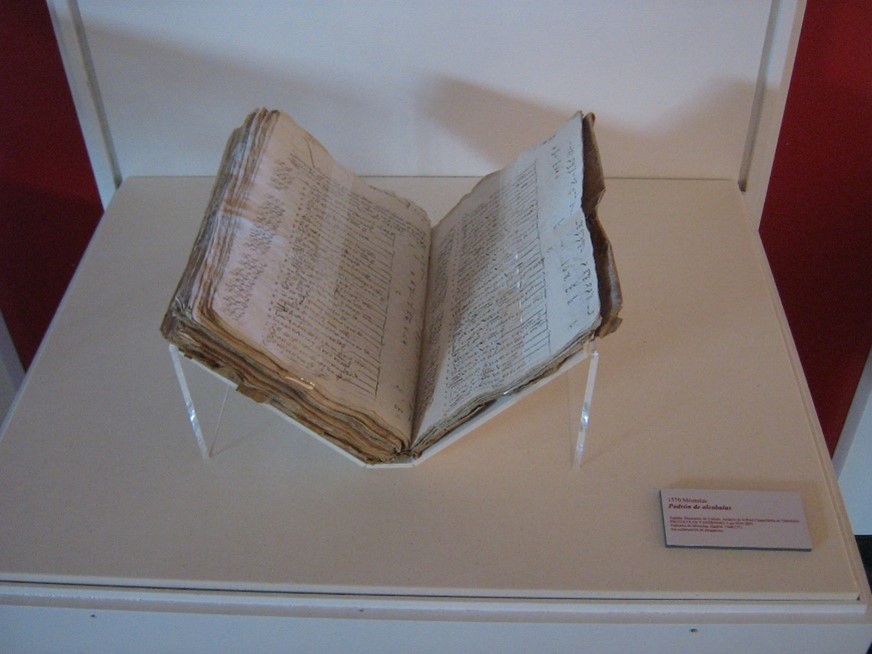

Have you ever wondered about what lies behind a piece of art, about what you can’t see?
All the content of an exhibition is important, but equally important are the supports that go behind it and that fulfil different functions since, in the end, they are decisive factors in optimising the visitor’s experience.
A support is an element, system or fixation that provides stability, which has to meet 3 basic requirements:
1. Functionality
2. Aesthetics and stability
3. Preventive conservation
One of SIT`s main particularities is the creation of special supports that provide personalised solutions for each work of art. Throughout our professional experience we have had the privilege of creating a wide variety of supports for different museums and exhibitions, such as the following:
SUPPORT FOR ARMOUR HELMET (project presented for the Army Museum – Alcazar of Toledo).
In the project presented for the new installations of the Army Museum, a support with special characteristics was created for the exhibition of armour parts.
It was a support for an armour helmet. This support was telescopic and was mechanised by means of a wall or floor fixing rod through a plate. In this way, the support could be perfectly adapted once it was fixed.
It also had at one end a support claw fixed to a plate, hammered into the most suitable shape for perfect adaptation to the hull.
All those parts of the metal support that were to be in contact with the pieces were covered with special materials that ensured the correct preservation of the piece.
The end on which the part rests is padded and protected to receive the helmet and fix it perfectly. Special materials shall be used to ensure the correct preservation of the piece.
SUPPORT FOR MUSICAL INSTRUMENTS (permanent exhibition Royal Conservatory of Music)
Among the needs foreseen for the project for the Real Conservatorio Superior de Música de Madrid, carried out by the department of SIT Proyectos Museísticos, was the manufacture, supply and installation of the supports necessary for the correct display of the pieces that made up the exhibition, among which the following should be highlighted: violas, violins, cellos, harps, guitars, flutes, piccolos, clarinets, pianos, etc.
These special stands were made individually for each of the pieces.
Each and every one of the supports were made of materials such as methacrylate or stainless steel, perfectly fulfilling their function of guaranteeing the correct holding of the piece inside the display case without compromising its conservation.
In order to make these supports, the relevant visits to the Royal Conservatory of Music were carried out beforehand, carrying out a study and taking measurements of each of the pieces that make up the permanent collection.

SUPPORTS FOR BOOKS DESIGNED FOR THE EXHIBITION “THE GOVERNMENT AND ADMINISTRATION OF THE TOWN OF MÓSTOLES IN THE SECOND HALF OF THE SEVENTEENTH CENTURY
(Cultural Centre of the Town of Móstoles)
All the supports for this exhibition were made of innocuous materials, suitable for the correct conservation of the documents: methacrylate and feather cardboard.
MANNEQUIN FOR UNIFORMS
(project presented for the Museo del Ejército Alcázar de Toledo)
In the project presented for the new installations of the Army Museum, a support with special characteristics was designed for the exhibition of uniforms and textiles.
Following a report on the specific needs of the Museum’s textiles, and in accordance with the request of the Museum’s team of curators, a mannequin was created consisting of support bars, rigid parts and skirts.
Prior to the creation of the made-to-measure clothing supports, it is absolutely essential to carry out a preliminary study of the set of pieces that will rest on this support.
This preliminary documentation work involves, in short, constructing the made-to-measure mannequin of the suit, knowing:
- Its interior measurements.
- Its pattern.
- The way it should be worn (posture, original concept, placement of all the components, etc.).
components, etc.). - The state of conservation of the original.
- The logical order of placement of the components, so that the appearance is as required and also so that they are not damaged.
- The circumstances of the exhibition, storage, etc. (a clothing support for a display case, for an open exhibition, or a filling for storage or packaging is not the same thing).
- Unify the aesthetic criteria of the mannequins if they go to an exhibition.
full body, head or not, bust only, etc.). - The development of this support was carried out in different phases of construction
Supporting bars:
The support was made by placing on a solid stainless steel base two solid bars of the same material. This base was completely machined.
This base, lined with a neutral and totally innocuous material, gives stability to the assembly and avoids any type of tension in the garment.
Rigid parts:
From a core of self-extinguishing, high-density polyethylene, the parts of the body where a rigid structure was necessary were modelled and reinforced with fibreglass: the head, the bust, the calves, an arm and a hand.
These supports were covered with barrier material.
In addition, covering all the parts, a layer of shock-absorbing material of the Shock Textile type was placed, which will prevent possible deformations in the event of prolonged pressure, favouring the absorption of shocks, etc.
For the final layer, that is, the one that will receive the piece, an elastic cotton textile, Ventubel type, was used. This material is completely neutral and stable.
To achieve the desired finish, the visible parts were covered with neutral cotton textile.
Faldonaie:
For those areas that did not require a rigid support (thighs, etc.) as well as to eliminate possible tensions, a skirt was made using again a shock-absorbing material of the Shock Textile type that conferred volume and also allowed the most natural possible articulation of the garments.
All the soft parts are covered by a beige cotton batiste.
For the feet, volumes were made of polypropylene, a totally neutral and stable material, to allow the dressing of stockings, shoes, boots, etc.
IVORY COMB STAND
(The Archaeological Ensemble of Carmona)
The Carmona Archaeological Ensemble asked us to design the supports for the exhibition of some of its most emblematic pieces.
Due to the special characteristics and the diversity of materials of these pieces, a technical visit was made to study and take measurements of them.
One of the most unique pieces is an ivory comb of small dimensions, about 2.9 x 1.5 cm. It was part of a funerary trousseau.
For this piece we thought of a support that would allow the piece to be fixed by means of four support points at its ends, thus avoiding the use of nylon threads or any other type of fibre between the bristles of the comb.
This support is also completely removable, allowing the piece to be installed and uninstalled as many times as necessary: for restoration, etc.
Conclusion
After 40 years of experience, there are numerous sculptures, books, manuscripts, jewellery, archaeological pieces, technical elements, conceptual works… from museums and national and international foundations that use elements manufactured by SIT for their conservation and exhibition.
Our company has a multidisciplinary team made up of restorers specialising in preventive conservation, art historians, architects and designers who approach each piece with science and a passion for innovation.